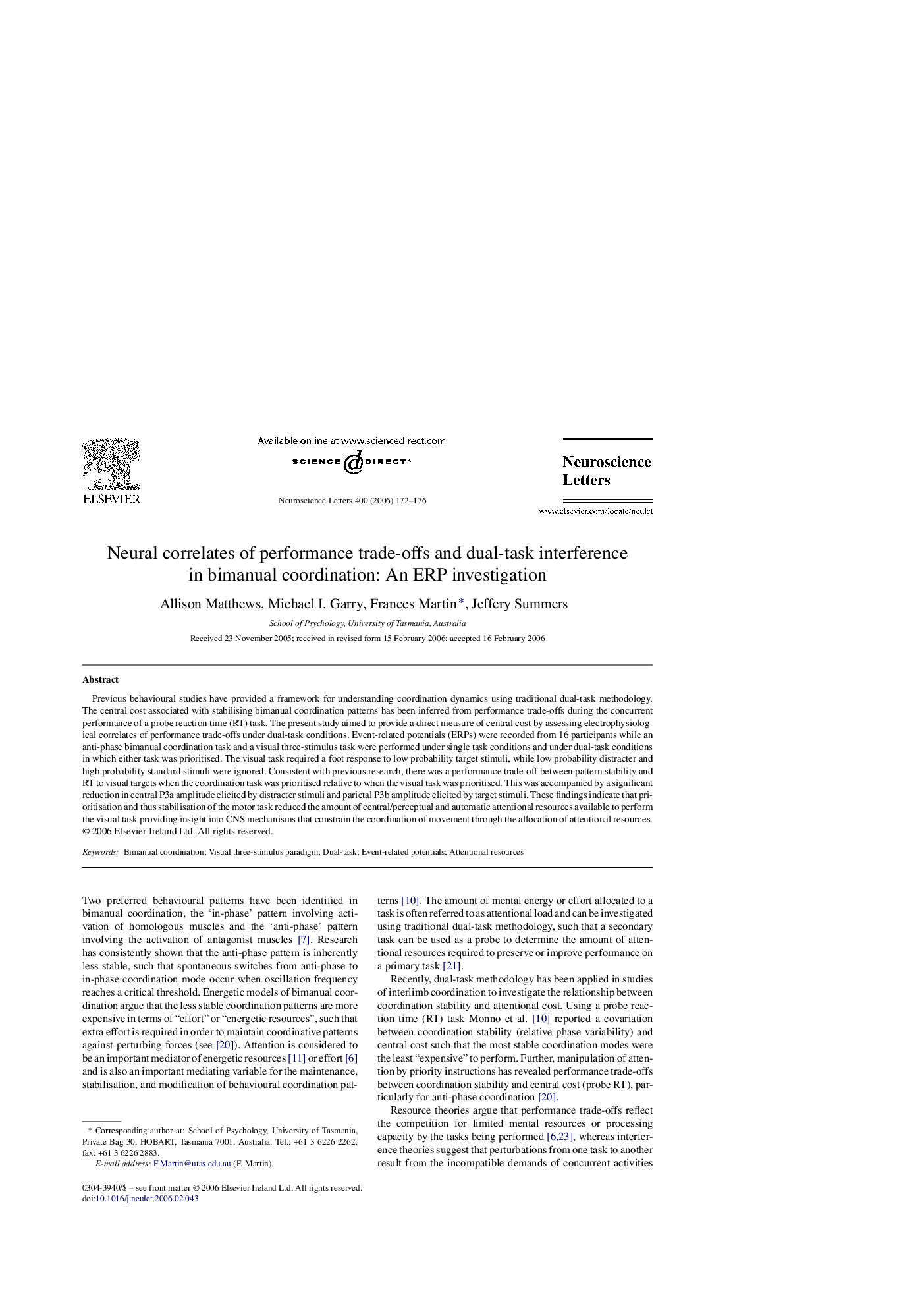| Article ID | Journal | Published Year | Pages | File Type |
|---|---|---|---|---|
| 4350823 | Neuroscience Letters | 2006 | 5 Pages |
Previous behavioural studies have provided a framework for understanding coordination dynamics using traditional dual-task methodology. The central cost associated with stabilising bimanual coordination patterns has been inferred from performance trade-offs during the concurrent performance of a probe reaction time (RT) task. The present study aimed to provide a direct measure of central cost by assessing electrophysiological correlates of performance trade-offs under dual-task conditions. Event-related potentials (ERPs) were recorded from 16 participants while an anti-phase bimanual coordination task and a visual three-stimulus task were performed under single task conditions and under dual-task conditions in which either task was prioritised. The visual task required a foot response to low probability target stimuli, while low probability distracter and high probability standard stimuli were ignored. Consistent with previous research, there was a performance trade-off between pattern stability and RT to visual targets when the coordination task was prioritised relative to when the visual task was prioritised. This was accompanied by a significant reduction in central P3a amplitude elicited by distracter stimuli and parietal P3b amplitude elicited by target stimuli. These findings indicate that prioritisation and thus stabilisation of the motor task reduced the amount of central/perceptual and automatic attentional resources available to perform the visual task providing insight into CNS mechanisms that constrain the coordination of movement through the allocation of attentional resources.
